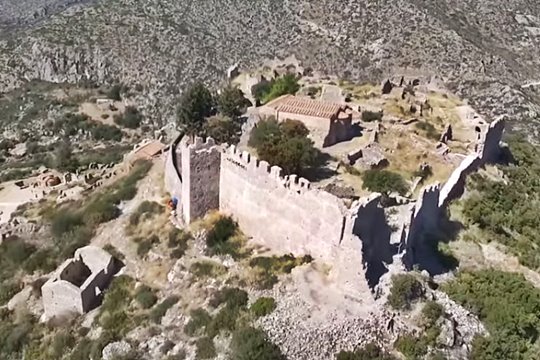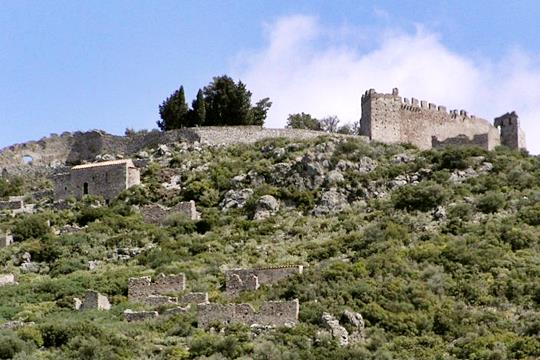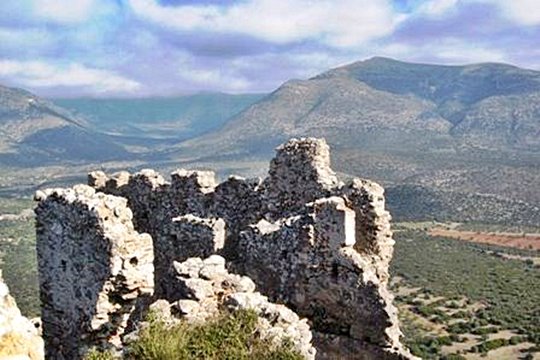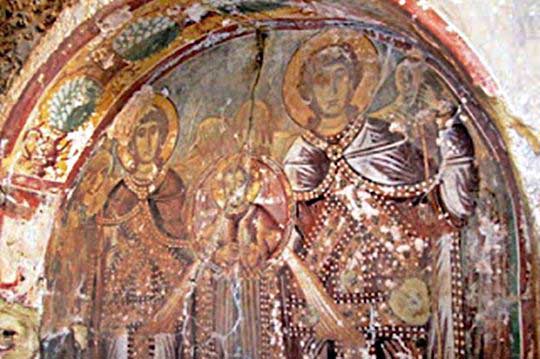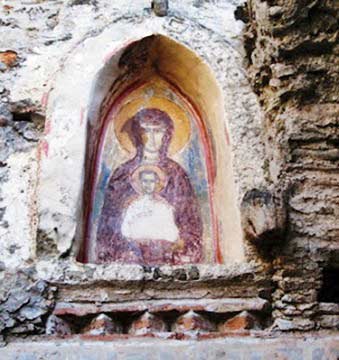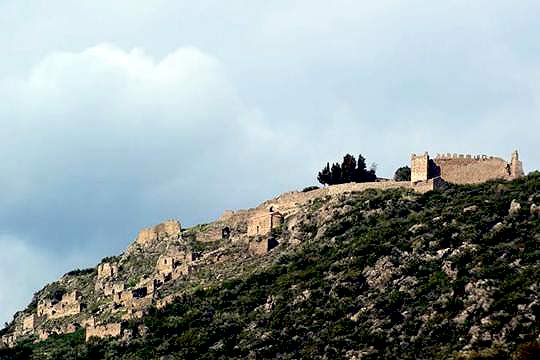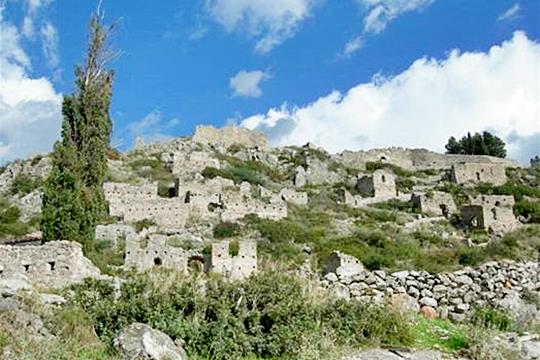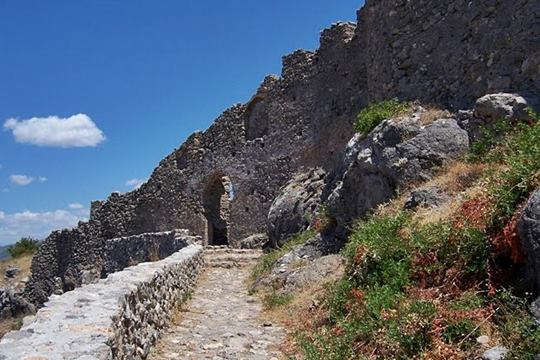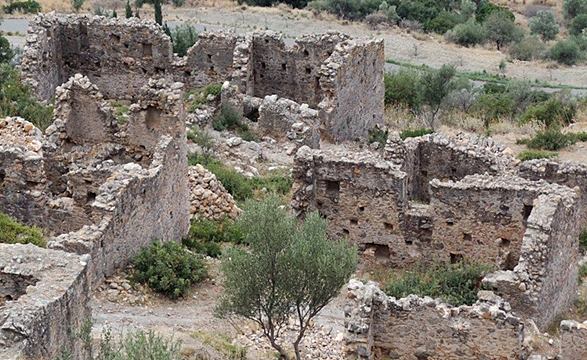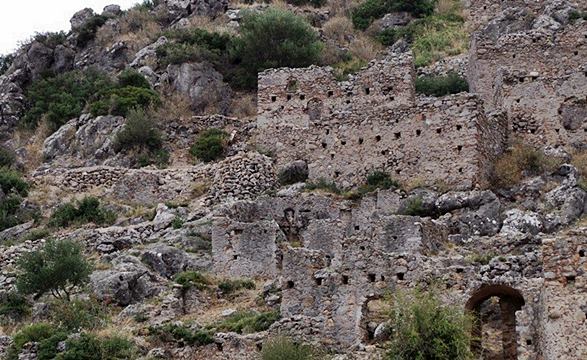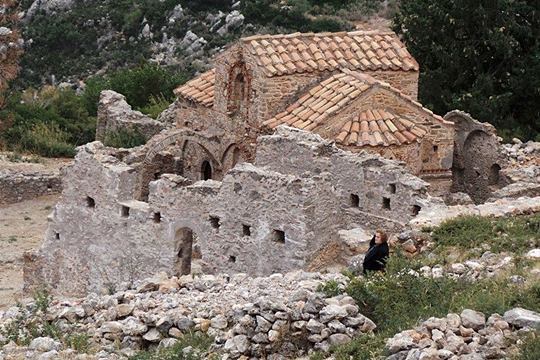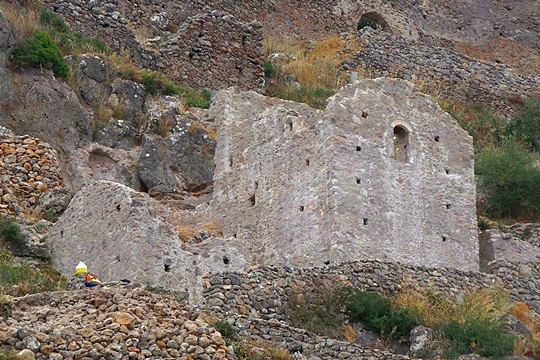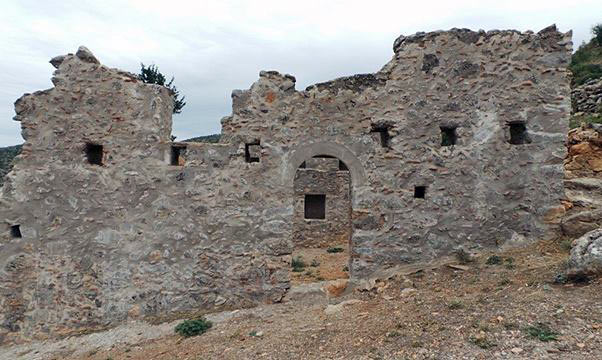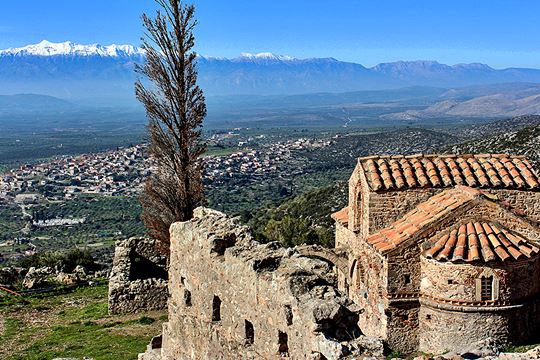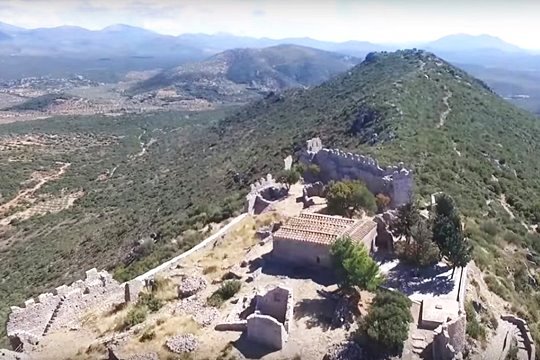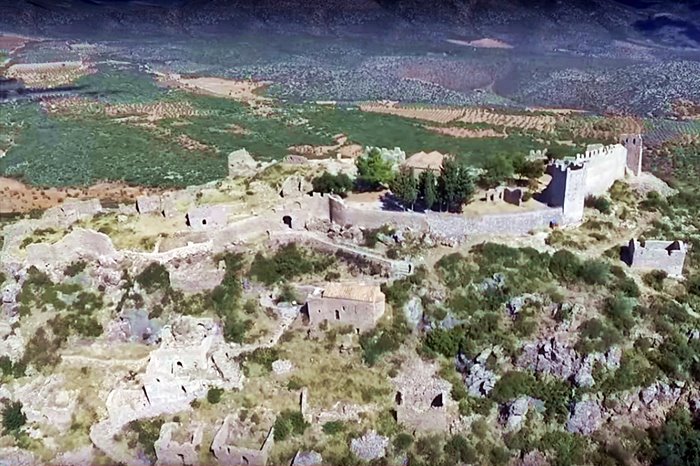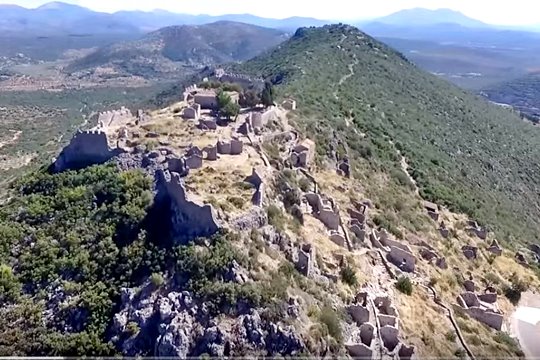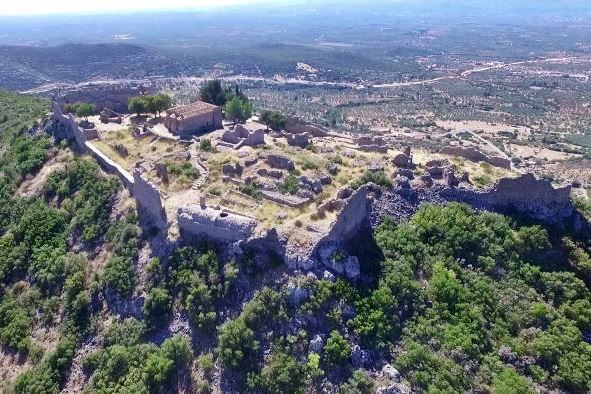Geraki, Evrotas, Laconia,Peloponnese
Castle of Geraki
| Location: |
| Geraki, Laconia, at SE Peloponnese |
| Region > Prefecture: | 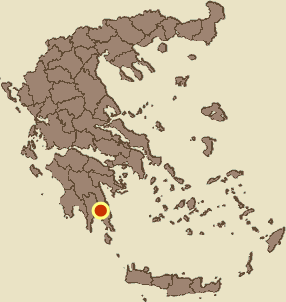 |
| Peloponnese Laconia | |
| Municipality > Town: | |
| City of Evrotas • Geraki | |
| Altitude: | |
|
Elevation ≈ 400 m (Relative Height≈100 m) |
| Time of Construction | Origin | |
| 1250 | FRANKISH |
|
| Castle Type | Condition | |
| Fortress-state |
Not Good
|
The castle of Geraki was built on a low hill of the southeastern slopes of Parnon mountain, close to the modern Geraki village,39km from Sparta, by the Franks.
It was one of the most important castles of Peloponnese once, but it is in ruins today. The most notable characteristic is that many Byzantine churches are preserved, to a degree, inside and in the nearby medieval settlement.
History
After the fall of Constantinople in 1204, most of Peloponnese became a Frankish territory, the Principality of Achaea. The Franks divided it in 12 baronies. Geraki was the seat of one of them.
In 1209, Geraki was granted to the French Guy de Nivelet, who built the castle there, probably around 1250. Nivelet was the one who named it "Geraki" (Gr. for "falcon"). The place was known since antiquity as "Geronthrai".
The Franks did not stay long, though. In 1262, they had to surrender the area and the castle to the Byzantines, together with other important castles, like Mystras, after their defeat in the Battle of Pelagonia in 1259.
The Byzantines were there for 200 years. In this period, it became one of the main medieval cities of Peloponnese.
In 1460, Geraki was captured by the Turks who had taken the whole region including Mystras, under the leadership of Mohamed II the Conqueror himself.
Just 3 years later, in 1463, The Venetians occupied Geraki but left in 1468 and the Turks came back.
Sometime in the 15th or the 16th century the castle and the medieval settlement were abandoned and the population moved lower, to the modern village which became the new center of the region.
The absence of Turkish or Venetian traces in the castle allow us to guess that the castle (the acropolis) was abandoned soon after the arrival of the Turks. After that, the settlement declined and was gradually deserted. This procedure usually takes some decades.
Structure, Fortification & Buildings
The list of the main monuments in the castle as presented in the website of the Greek Ministry of Culture:
In the castle
- Church of St. George. Three-aisled basilica with a narthex, decorated with wall paintings dated to the 14th century.
- Church of Our Lady Zoodochos Pighi (the Life-giving Source). Aisleless church with wall paintings dated to the 15th century.
- Church of St. Paraskevi. Cross-vaulted church, decorated with wall paintings of the 15th century.
- "Pera Ecclesies" (Far Churches). Church of Prophet Elijah, aisleless, with wall paintings dating from the 15th century; church of the Epiphany, cross-vaulted, with wall paintings dating from the 13th century; church of the Taxiarches (the Archangels), cross-vaulted, with wall paitnings dated to the 15th century.
In the settlement
- Church of Evangelistria (Our Lady of the Annunciation). Aisleless, cross-in-square church, decorated with wall paintings of the 12-13th centuries.
- Church of Saint Sozon. Domed, four-column, cross-in-square church, probably built in the 12th century. The interior is decorated with wall paintings dated to the 13th century.
- Church of St. Athanassios. Domed, four-column, cross-in-square church, probably built in the 12th century. The interior is decorated with wall paintings dated to the 13th century.
- Church of St. Nicholas. Two-aisled church, decorated with wall paintings dating from the end of the 13th century.
- Church of St. John Chrysostomos. Aisleless church with two layers of wall paintings, dated to the end of the 13th-beginning of the 14th century, and the middle of the 15th century.
| First entry in Kastrologos: | July 2012 | Last addition of photo/video: | October 2021 |
Sources
- Pictures from mywinterinvillagegreece.blogspot.gr/
- Website ΟΔΥΣΣΕΥΣ - Greek Ministry of Culture Geraki
- Άννα-Μαρία Σιμάτου-Ροζαλία Χριστοδουλοπούλου, "ΠΑΡΑΤΗΡΗΣΕΙΣ ΣΤΟΝ ΜΕΣΑΙΩΝΙΚΟ ΟΙΚΙΣΜΟΤΟΥ ΓΕΡΑΚΙΟΥ", Δελτίον XAE 15 (1989-1990), Περίοδος Δ'• Σελ. 67-88 ΑΘΗΝΑ 1991 (Greek only)
- Photos from Panayotis Christakis
- YouTube video by the user G Traveller Κάστρο Γερακίου - Castle of Geraki
|
|
| Access |
|---|
| Approach to the monument: |
| The village is on the upcountry road from Leonidio to Sparta (39km). the castle is on a hill 5km from the village. |
| Entrance: |
| Free entrance. Limited hours. Off season, the place is usually locked and the visit is possible after calling the local office of Archaelogy. |
| Timeline |
|---|
|



